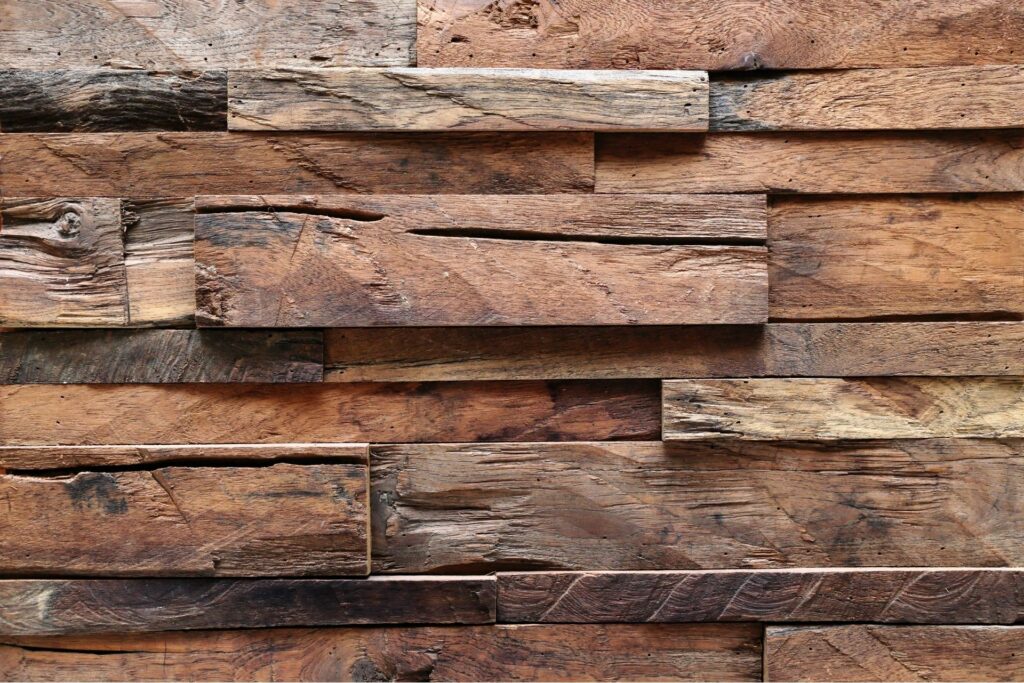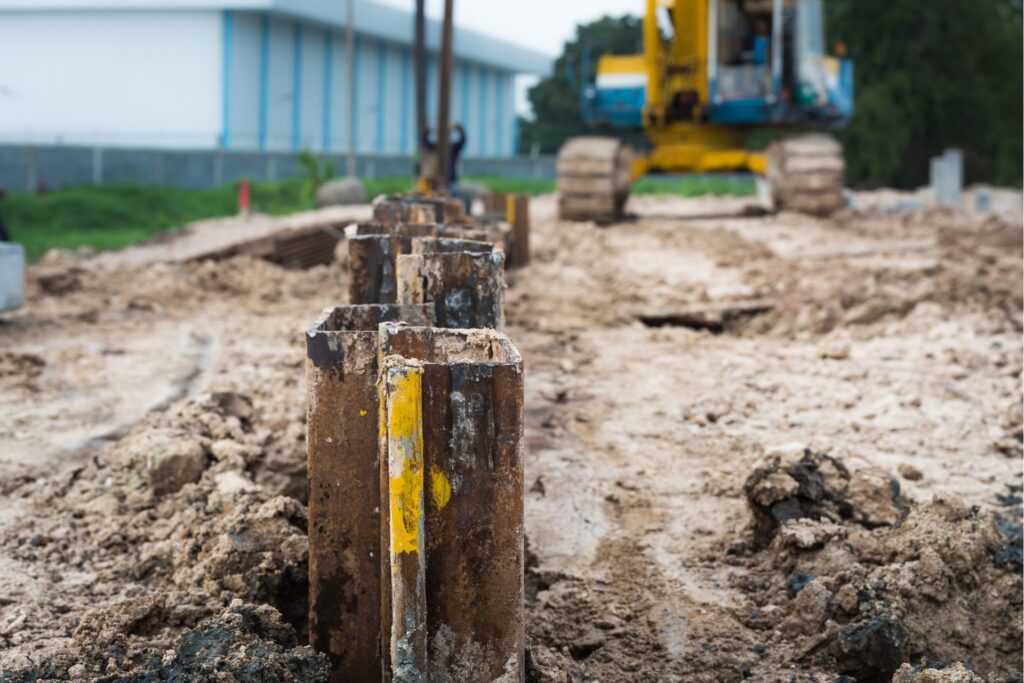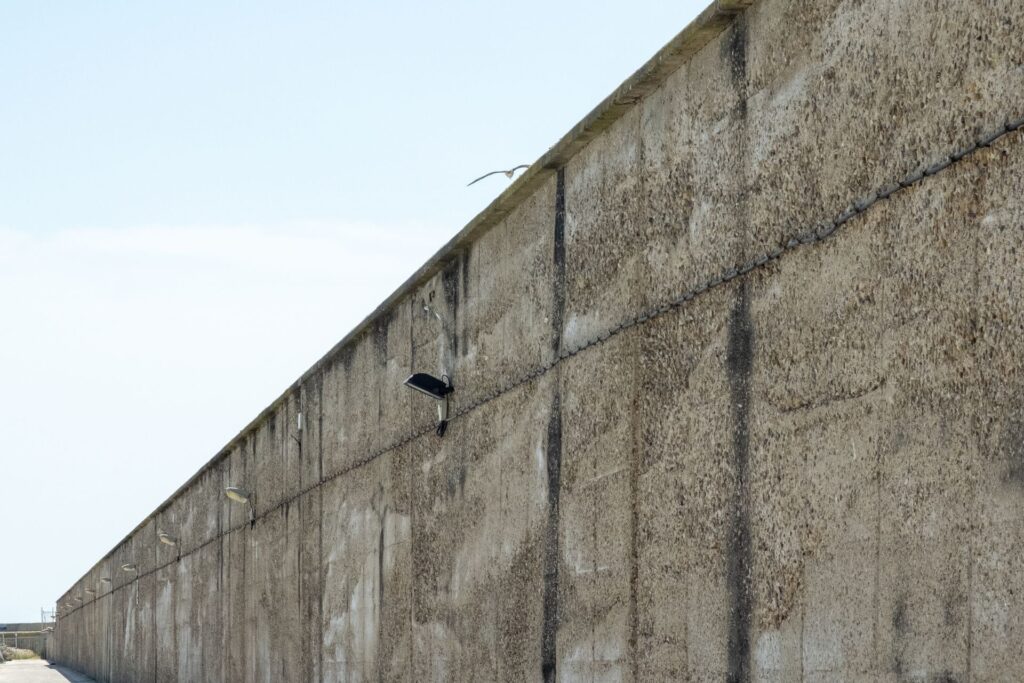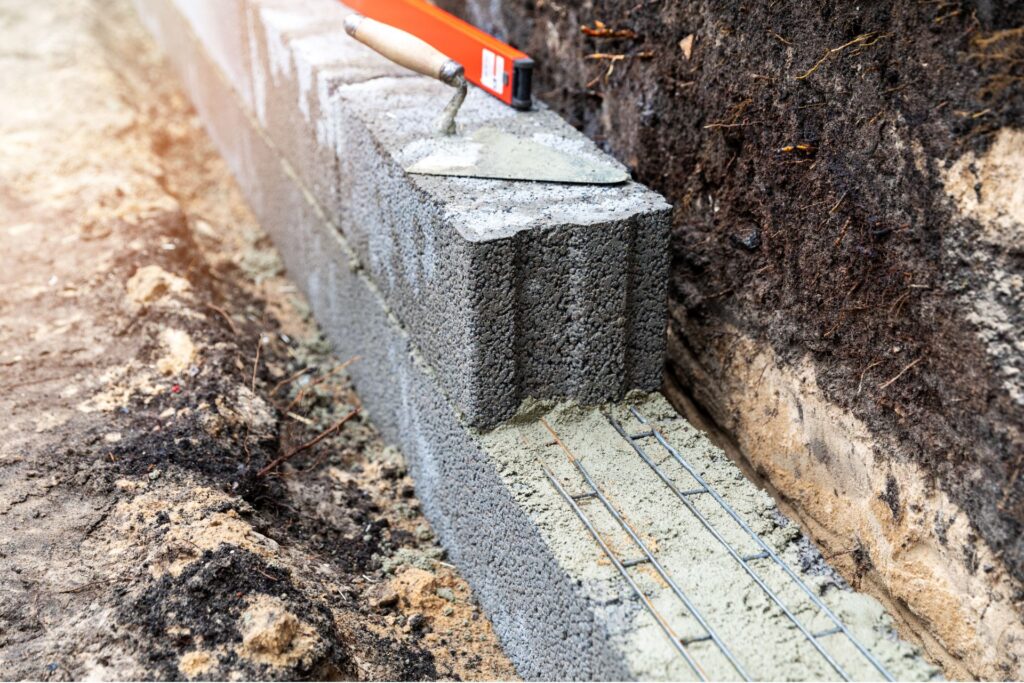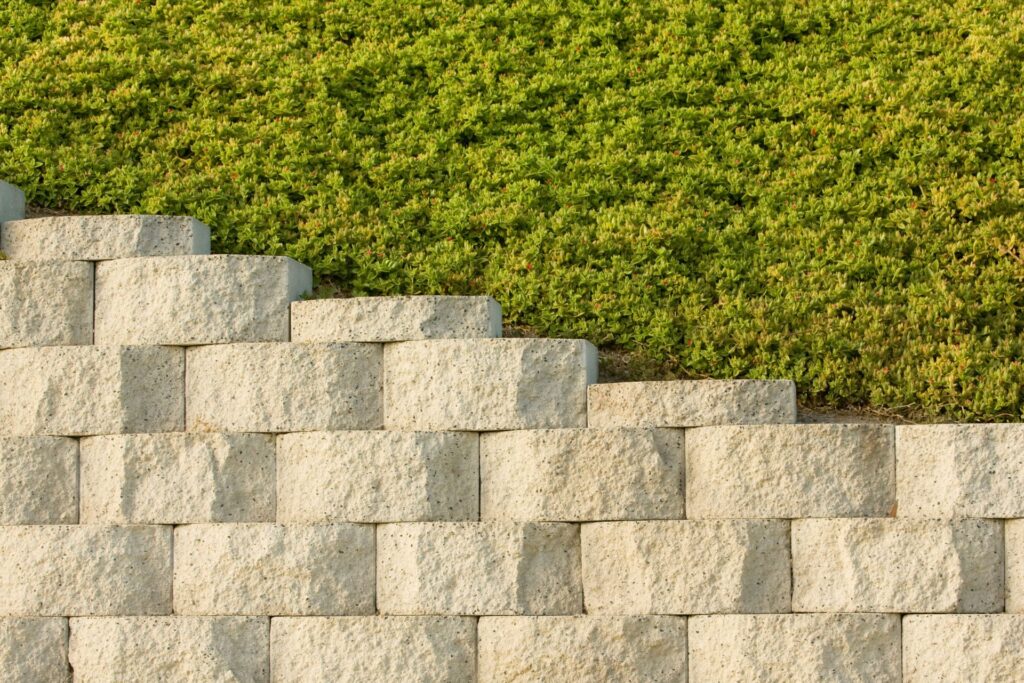Welcome to the ultimate guide on Keystone Retaining Walls in New Zealand, where the unique challenges of maintaining and enhancing the natural beauty of landscapes meet innovative solutions. In a country marked by majestic landscapes and diverse terrains, keystone retaining walls emerge as a popular choice for their blend of strength, functionality, and aesthetic appeal. These walls not only combat erosion and provide valuable outdoor space but also add architectural sophistication to any garden. This comprehensive guide aims to delve into the essence of keystone retaining walls, from their innovative design and historical development to the practical benefits they bring to New Zealand properties. Whether you’re embarking on a DIY project or considering professional installation, this guide is crafted to navigate you through every aspect of choosing, installing, and maintaining keystone retaining walls, ensuring your landscape transformation journey is well-informed and inspired every step of the way.
Keystone retaining walls in New Zealand offer a durable, versatile, and aesthetically pleasing solution for managing soil erosion, enhancing landscape design, and creating functional outdoor spaces. These interlocking walls provide stability to sloped areas, combatting New Zealand’s unique geographical challenges. Ideal for both DIY enthusiasts and those preferring professional installation, keystone walls blend seamlessly into the natural beauty of any landscape, adding both value and charm. Whether you’re looking to protect your property from erosion or simply elevate its aesthetic appeal, keystone retaining walls are a reliable and attractive choice.
Understanding Keystone Retaining Walls
When it comes to enhancing the structural integrity of sloped landscapes while adding aesthetic value, keystone retaining walls stand out as a preferred choice among homeowners, landscapers, and civil engineers. This comprehensive guide delves into what keystone retaining walls are, how they differ from other retaining walls, their historical development, and the key features that make them uniquely advantageous.
What Are Keystone Retaining Walls?
Keystone retaining walls are a type of retaining wall constructed using interlocking concrete units. Unlike traditional retaining walls, which may rely on sheer mass or deeper foundations for stability, keystone walls leverage a distinctive interlocking system. This not only ensures structural integrity but also facilitates ease of installation. The “keystone” in their name reflects the pivotal role these interlocking pieces play, reminiscent of the keystone in an arch, which is central to its stability.
Distinction from Other Retaining Walls
What sets keystone retaining walls apart from other types is their unique interlocking feature. While some retaining walls use gravity, cantilevered designs, or anchored systems to hold back soil, keystone walls rely on the shape and weight of interlocking units. This difference not only impacts the wall’s appearance but also its flexibility and potential for customization.
A Brief History and Development
The concept of using interlocking stones for construction is ancient, tracing back to various civilizations that built structures still standing today. However, the modern keystone retaining wall system, with its standardized, engineered blocks designed for soil retention, emerged prominently in the latter half of the 20th century. This development was driven by the need for more efficient, reliable, and aesthetically pleasing solutions to soil erosion and landscape management.
Key Features of Keystone Retaining Walls
Interlocking System
The hallmark of keystone retaining walls is their sophisticated interlocking system. Each block is designed to fit securely with the next, creating a unified structure that distributes pressure evenly and resists the lateral forces exerted by the soil behind it. This system not only contributes to the wall’s strength but also makes the construction process faster and less labor-intensive.
Durability
Constructed from high-strength concrete, keystone retaining walls are built to last. They are resistant to weathering, erosion, and pests—challenges that can compromise other types of walls. The durability of keystone walls means they are an investment that pays off in the long term, with minimal maintenance required.
Versatility in Design
Perhaps one of the most appealing aspects of keystone retaining walls is their versatility in design. They can be tailored to suit a wide range of aesthetic preferences and landscape requirements. From curved walls that hug landscape contours to tiers that create usable terraced spaces, the design possibilities are nearly endless. Additionally, the blocks come in various colors and textures, allowing for a seamless blend with the natural surroundings or a bold architectural statement.
Keystone retaining walls offer a blend of functionality, durability, and design flexibility that makes them an excellent choice for soil retention and landscape enhancement. Their development represents a significant advancement in retaining wall technology, providing solutions that are both effective and visually appealing. Whether for residential landscaping projects or large-scale civil engineering works, keystone retaining walls stand as a testament to human ingenuity in harmonizing structural needs with natural beauty.

Benefits Of Keystone Retaining Walls
When considering landscaping and construction projects, particularly in regions as diverse as New Zealand, the choice of materials and techniques is paramount. Keystone retaining walls emerge as a stellar option, blending functionality with aesthetic appeal. Below, we delve into the multitude of benefits these walls offer, from combating erosion to enhancing landscape beauty, ensuring durability, and bolstering safety.
Erosion Control: A Shield Against Nature’s Forces
In New Zealand’s dynamic weather patterns, from wet, lush landscapes to areas prone to dry conditions, soil erosion presents a significant challenge. Keystone retaining walls act as a bulwark against these forces. Their interlocking design not only adds structural integrity to the landscape but also minimizes soil displacement caused by water runoff and wind. By redirecting water flow and providing a barrier, these walls protect the soil, preserving the land’s fertility and keeping the natural beauty intact.
Aesthetic Appeal: Elevating Landscapes with Versatile Designs
The visual appeal of a landscape is not just an afterthought; it’s a priority. Keystone retaining walls offer unparalleled design flexibility, making them a favorite among architects and homeowners alike. Whether you’re aiming for a contemporary look or a natural stone appearance, the variety of textures, colors, and shapes available can complement any design ethos. These walls transform functional spaces into artistic expressions, enhancing the natural contours of the land and blending seamlessly with the environment.
Durability and Maintenance: A Lasting Legacy with Minimal Upkeep
The investment in keystone retaining walls is not just for the present but for the future. Constructed from high-quality materials, these walls stand the test of time, resisting wear from weather conditions, pests, and decay. Their durability is matched by their low maintenance requirements. Unlike traditional walls that may need regular repairs or replacements, keystone walls maintain their integrity and appearance with minimal upkeep, making them a cost-effective solution for long-term landscaping projects.
Safety and Stability: Securing Slopes and Protecting Properties
The safety and stability provided by keystone retaining walls are invaluable, especially in sloped terrains where landslides and soil slippage are potential risks. By anchoring soil and redistributing the earth’s pressure, these walls ensure the ground remains stable, safeguarding properties and inhabitants against the threats of shifting landscapes. This protective feature is crucial in preserving the usability of outdoor spaces and providing peace of mind in areas prone to environmental stresses.
In conclusion, keystone retaining walls offer a comprehensive solution to numerous landscaping challenges faced in New Zealand and beyond. From their robust erosion control capabilities to their aesthetic versatility, long-lasting durability, and essential safety features, these walls are a testament to the synergy between functionality and beauty. As we continue to shape our environments, the benefits of keystone retaining walls stand out as pillars of sustainable, attractive, and secure landscaping design.
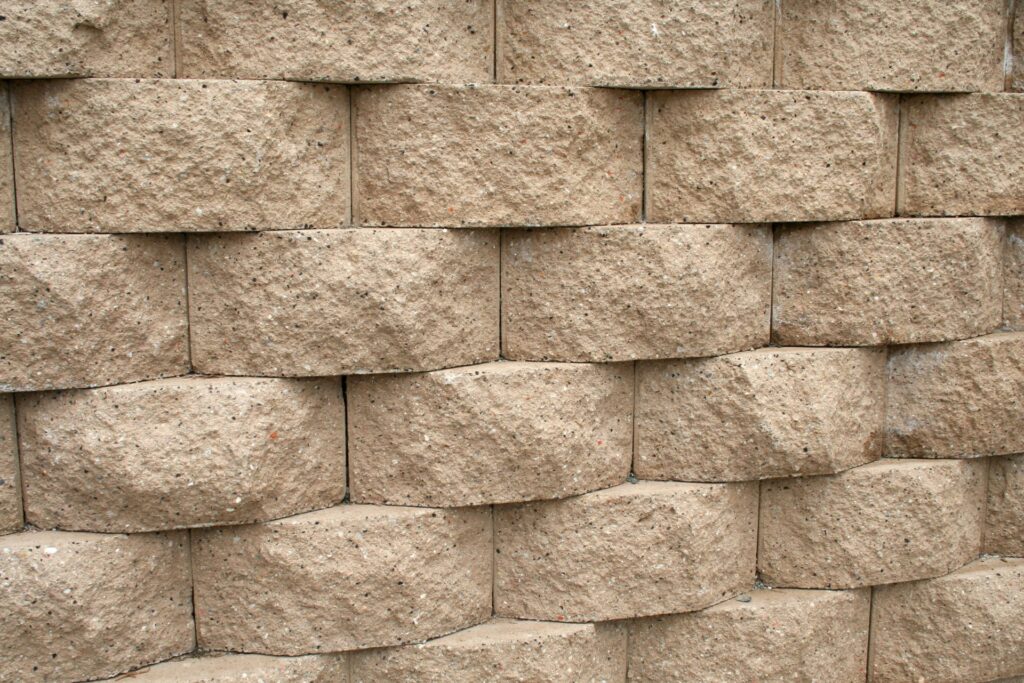
Planning And Design Considerations
Crafting a retaining wall, especially a keystone retaining wall, involves more than just stacking stones. It’s a meticulous process that integrates functionality with aesthetics, ensuring the structure not only holds back soil but also complements the landscape. This detailed guide delves into the crucial aspects of planning and design considerations, ensuring your project not only stands firm against the elements but also navigates the intricacies of regulations and design aesthetics seamlessly. Let’s explore these foundational pillars to elevate your landscape project in New Zealand.
Site Assessment: The Keystone to Success
The first step towards a successful keystone retaining wall project is a thorough site assessment. This isn’t merely a cursory glance at where you want your wall; it’s an in-depth analysis carried out by professionals. A professional site assessment considers soil type, drainage patterns, slope stability, and load-bearing capacity. This step is vital as it determines the wall’s feasibility, optimal location, and design specifications ensuring longevity and functionality. Skipping this step is like building on sand – risky and prone to failure.
Navigating Council Regulations in New Zealand
Before a single stone is laid, understanding and adhering to local council regulations is paramount. In New Zealand, retaining walls that exceed a certain height or are situated near boundaries or public utilities require a permit. This ensures the structure’s safety, stability, and compliance with environmental and urban standards. Obtaining the necessary permits might seem daunting, but it’s a straightforward process with the right guidance. This involves submitting detailed plans, undergoing inspections, and sometimes, public notifications. It’s not just bureaucracy; it’s about ensuring your project enhances the community and environment safely.
Choosing the Right Materials: Beyond Aesthetics
Selecting the right materials for your keystone retaining wall transcends aesthetic considerations. Color and texture play a significant role in complementing your landscape, but environmental conditions, such as moisture levels and temperature variations, dictate the suitability of materials. Durability, maintenance requirements, and environmental impact are key factors to consider. For instance, locally sourced stone not only reduces transportation emissions but also ensures the material is well-suited to local conditions. The choice of materials impacts not only the project’s environmental footprint but also its longevity and maintenance needs.
Design Inspiration: Merging Function with Beauty
Keystone retaining walls offer a unique blend of functionality and aesthetic appeal, making them a popular choice in New Zealand landscapes. The design possibilities are limitless, from terraced gardens that combat erosion to elegant boundary walls that define spaces. Integrating native plants, incorporating seating, or embedding lighting are just a few ways to enhance the beauty and utility of your wall. Drawing inspiration from local landscapes, architectural styles, and contemporary design trends can transform a simple retaining wall into a striking feature of your garden.
Embarking on the journey of building a keystone retaining wall in New Zealand requires a blend of careful planning, adherence to regulations, thoughtful material selection, and creative design. By focusing on these essential planning and design considerations, your project can not only achieve structural integrity but also enhance the aesthetic and functional value of your landscape. Remember, a well-designed and executed retaining wall not only secures soil but also elevates the beauty and utility of your outdoor space, making it a worthwhile investment for any homeowner.

Installation Process
Creating a keystone retaining wall can be a significant yet rewarding project, whether you’re looking to tackle it as a DIY challenge or planning to hire professional installers. Understanding the installation process is crucial for ensuring the wall’s longevity, effectiveness, and aesthetic appeal. This guide aims to provide a comprehensive overview of the installation process, comparing DIY versus professional installation and offering a step-by-step guide and tips for a successful keystone retaining wall project.
DIY vs. Professional Installation: Making the Right Choice
DIY Installation:
Pros:
Cost Savings: One of the most appealing aspects of DIY installation is the potential to save on labor costs, which can be considerable.
Personal Satisfaction: Completing a project like this on your own can offer immense personal satisfaction and a sense of accomplishment.
Flexibility: Handling the project yourself means you can work at your own pace and on your own schedule.
Cons:
Time-Consuming: DIY projects can take significantly longer to complete, especially for those with limited experience.
Potential for Mistakes: Without professional expertise, there’s a higher risk of errors, which can lead to additional costs or the need for rework.
Physical Labor: Installing a retaining wall is physically demanding and requires a certain level of fitness and stamina.
Professional Installation:
Pros:
Expertise: Professionals bring experience and knowledge, ensuring the project is done correctly and efficiently.
Time-Saving: Hiring experts can drastically reduce the time it takes to complete the project.
Warranty and Liability: Many professionals offer warranties for their work, and liability insurance covers any accidents on-site.
Cons:
Cost: The primary drawback of hiring professionals is the cost, as labor charges can significantly increase the project’s overall expense.
Less Personal Control: Some homeowners may find they have less control over the project timeline and minor details when outsourcing the work.
Step-by-Step Guide to Installing a Keystone Retaining Wall (for the DIY Enthusiast)
1. Plan Your Wall: Determine the location and design. Check local building codes for any restrictions or permits required.
2. Prepare the Site: Clear the area of vegetation and debris. Excavate a trench to the depth recommended by the manufacturer, usually incorporating a gravel base for drainage.
3. Lay the Foundation: Create a solid and level foundation using compacted gravel. Ensure it’s level from front to back and side to side.
4. Start Building: Begin laying your keystone blocks from one end, ensuring they are level and properly aligned. Use a rubber mallet to adjust the blocks as necessary.
5. Install Drainage: Place a drainage pipe behind the first row of blocks, ensuring it has a slight slope to allow water to escape. Cover with gravel.
6. Continue Building: Stack additional rows of blocks, following the manufacturer’s guidelines for staggering joints and securing the blocks together.
7. Backfill:** As you build, backfill the area behind the wall with gravel to promote drainage.
8. Cap the Wall: Once the desired height is reached, install capstones using a construction adhesive for a finished look.
Tips for Successful Installation
Follow Manufacturer Instructions: Always adhere to the guidelines provided by the keystone block manufacturer to ensure the best results.
Consider Drainage: Proper drainage is essential to prevent water pressure from building up behind the wall, which can lead to failure.
Use Quality Materials: Don’t skimp on materials, especially the base and backfill materials, as these contribute significantly to the wall’s stability and longevity.
Check Levels Regularly: Use a level throughout the installation process to ensure blocks are even and the wall remains straight.
Seek Help When Needed: Don’t hesitate to consult with professionals for advice or assistance if you encounter challenges during the installation process.
Embarking on a keystone retaining wall project requires careful consideration of whether to go the DIY route or hire professionals. By understanding the pros and cons of each option, following a detailed step-by-step guide, and adhering to best practices for installation, homeowners can ensure the successful completion of a retaining wall that not only serves its functional purpose but also enhances the beauty of their outdoor space.

Maintenance And Upkeep
Maintaining the structural integrity and aesthetic appeal of your keystone retaining wall is crucial for ensuring it serves its purpose while enhancing the beauty of your outdoor space. A well-maintained retaining wall not only supports the soil and manages water runoff but also adds value to your property. In this detailed guide, we delve into essential maintenance tips and solutions for common issues associated with keystone retaining walls. Let’s keep your retaining wall looking great and functioning perfectly with minimal effort.
Routine Maintenance Tips
Regular Inspections
Conducting regular inspections is paramount. At least twice a year, during spring and fall, inspect your wall for any signs of damage or wear. Look out for cracks, bulges, or areas where the wall seems to be leaning. Early detection of these issues can prevent more significant problems down the line.
Cleaning Your Wall
Keystone retaining walls can accumulate dirt, moss, and other debris that detract from their appearance. Gently power washing the wall or using a garden hose with a spray nozzle can remove most of the surface dirt. For moss and mold, a solution of water and mild bleach or a commercially available moss remover can be used. Always test the solution on a small, inconspicuous area first to ensure it doesn’t discolor the stones.
Weed and Vegetation Control
Unwanted vegetation can grow in the nooks and crannies of your retaining wall. Regularly removing weeds by hand or applying an appropriate herbicide can prevent roots from expanding and causing structural issues. However, be cautious with chemicals to avoid damaging the wall or nearby plants you wish to keep.
Checking for Drainage Issues
Proper drainage is essential to the longevity of your retaining wall. Water buildup behind the wall can lead to pressure that might cause shifting or bulging. Ensure that drainage systems, such as weep holes or drainage pipes, are clear of debris and functioning correctly. After heavy rain, check for water pooling behind the wall and address any drainage issues promptly.
Dealing with Common Issues
Addressing Drainage Problems
If you notice signs of water damage or pooling behind your retaining wall, it’s crucial to improve the drainage system. This may involve cleaning out existing drainage paths, adding more weep holes, or installing additional drainage pipes. In some cases, a French drain system behind the wall can provide an effective solution.
Fixing Shifting Blocks
Shifting or leaning blocks can compromise the structural integrity of your retaining wall. If the shift is minor, you might be able to remove and reset the affected blocks. However, significant shifting often requires professional assessment and repair. A professional can determine if the foundation needs reinforcement or if other corrective measures are necessary.
Preventing Future Issues
Implementing preventive measures can save you time and money in the long run. Consider installing a geotextile fabric behind the wall to improve stability and prevent soil from clogging the drainage system. Additionally, avoid overloading the top of the wall with heavy objects or excessive soil pressure.
By following these routine maintenance tips and addressing common issues promptly, you can ensure your keystone retaining wall remains a functional and attractive feature of your outdoor space for years to come. Remember, while some maintenance and repairs can be DIY projects, don’t hesitate to consult with professionals for more significant concerns to guarantee the safety and longevity of your wall.
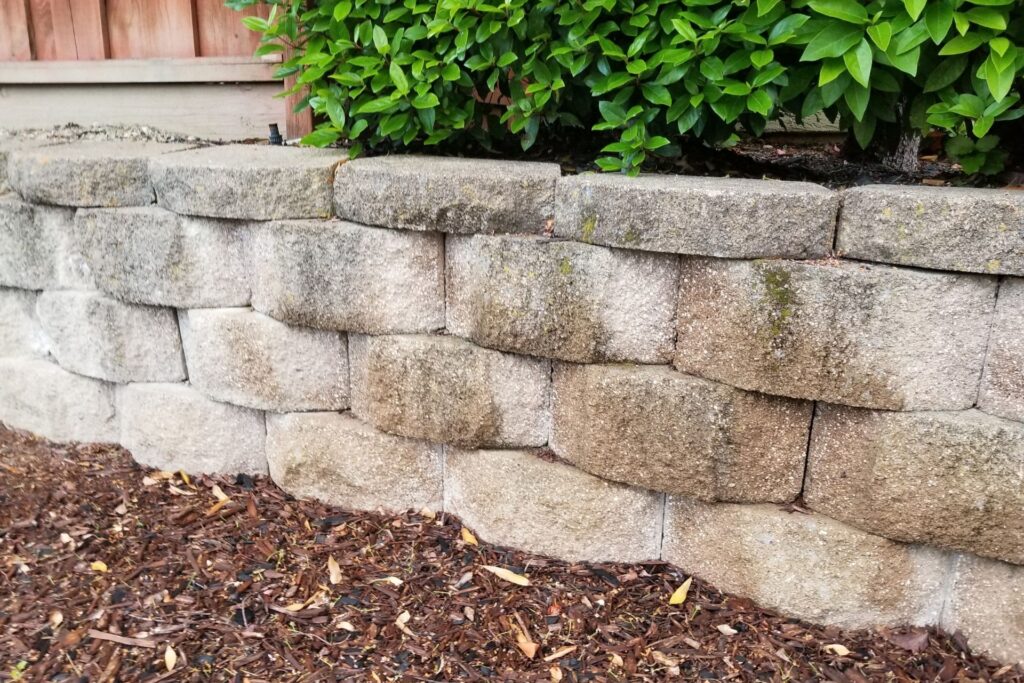
Cost Considerations
Creating a keystone retaining wall can be a significant but worthwhile investment for your property, enhancing both its functionality and aesthetic appeal. Understanding the cost considerations involved in such a project is crucial for homeowners and property developers alike. This comprehensive guide offers insights into budgeting for your keystone retaining wall and explores various financing options available in New Zealand, ensuring that your project not only meets your expectations but also aligns with your financial planning.
Budgeting for Your Keystone Retaining Wall
When it comes to budgeting for a keystone retaining wall, several key factors will influence the overall cost. Here’s what you need to consider:
Size of the Wall: The dimensions of your retaining wall — its length, height, and thickness — play a pivotal role in determining the cost. Larger walls require more materials and labor, which will increase the budget.
Choice of Materials: Keystone retaining walls can be built from a variety of materials, each with its own price point. Options range from concrete blocks, which are cost-effective and versatile, to natural stone, which is more expensive but offers a unique and premium look. The material you choose will significantly affect the project’s cost.
Installation Choices: The method of installation can also impact the budget. DIY projects can save on labor costs but may incur additional expenses if corrections are needed. Professional installation, on the other hand, although more costly upfront, ensures the job is done right the first time, potentially saving money in the long term.
Site Preparation and Accessibility: The condition of the site and its accessibility for construction equipment may also influence the cost. Sites that require extensive preparation or are difficult to access can increase the overall project budget.
Understanding these factors and how they contribute to the cost will help you budget effectively for your keystone retaining wall, ensuring you make informed decisions that balance quality and affordability.
Financing Your Project
For those in New Zealand looking to finance a keystone retaining wall project, there are several options to consider:
Savings: Utilizing savings is the most straightforward way to finance your project, avoiding any interest or fees associated with loans or credit facilities.
Home Equity Loans: If you have equity in your home, a home equity loan can be a cost-effective way to finance your retaining wall project. These loans typically offer lower interest rates compared to personal loans or credit cards.
Personal Loans: Personal loans are a versatile financing option, available from various banks and financial institutions in New Zealand. They can be unsecured, which means they don’t require collateral, but this often results in higher interest rates.
Government Grants and Subsidies: In some cases, local government initiatives may offer grants or subsidies for landscaping projects that prevent erosion or improve property safety. It’s worth researching any available options that could reduce your out-of-pocket expenses.
Professional Financing Solutions: Some landscaping and construction companies offer financing solutions tailored to retaining wall projects. These can be a convenient way to spread the cost over time, though it’s important to carefully review the terms and interest rates.
Planning your budget and understanding your financing options are crucial steps in the journey toward building a keystone retaining wall. By considering the factors that affect costs and exploring various financing routes, you can ensure your project is both successful and financially manageable.
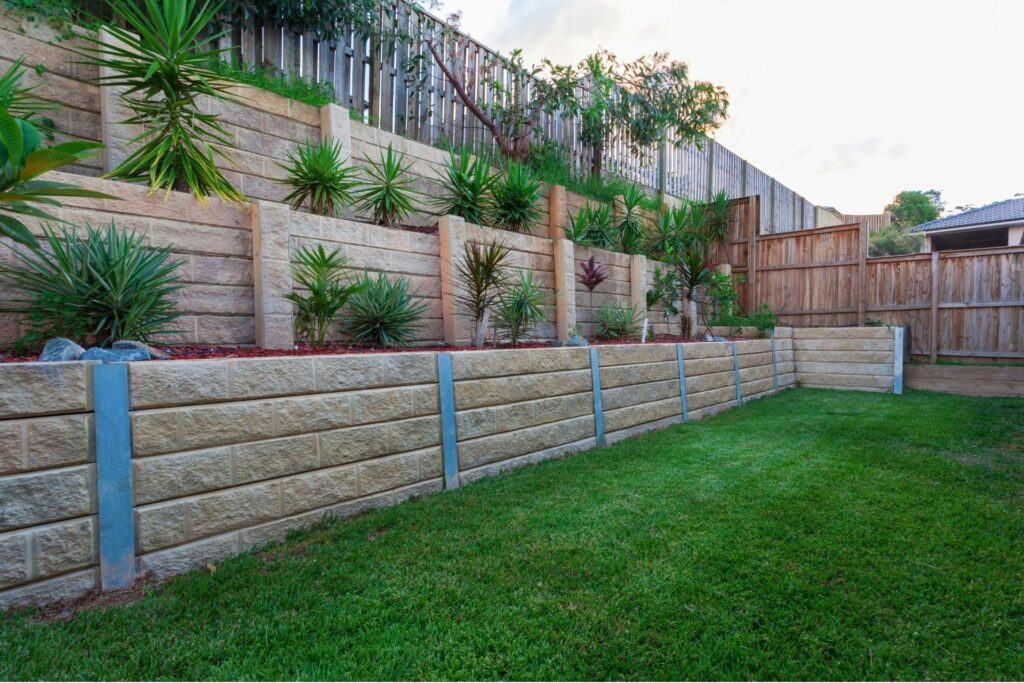
FAQs: About Keystone Retaining Walls NZ
Conclusion
Creating captivating and functional outdoor spaces is a goal for many homeowners in New Zealand, and keystone retaining walls have emerged as a popular choice due to their blend of aesthetic appeal and practical benefits. These walls are celebrated for their durability, strength, and ability to withstand New Zealand’s varied climate, ensuring long-lasting protection against soil erosion and landscape sloping. Keystone retaining walls also offer aesthetic versatility with their availability in various colors, shapes, and textures, allowing customization to complement any architectural style or garden design.
Furthermore, they promote natural drainage, reducing the risk of waterlogging and enhancing the health of your landscape. With a straightforward installation process, they are suitable for both DIY enthusiasts and professional landscapers. When planning a retaining wall project, it’s crucial to consider aesthetics, functionality, and environmental impact. Keystone retaining walls present a wise choice for enhancing New Zealand properties, offering a smart investment in the beauty, value, and sustainability of your outdoor space.
Find A Professional Retaining Wall Builder Near You!
- Retaining Wall Builders Hastings
- Retaining Wall Builders Hawkes Bay
- Retaining Wall Builders Kapiti
- Retaining Wall Builders Levin
- Retaining Wall Builders Lower Hutt
- Retaining Wall Builders Napier
- Retaining Wall Builders Palmerston North
- Retaining Wall Builders Porirua
- Retaining Wall Builders Upper Hutt
- Retaining Wall Builders Wellington
- Retaining Walls Nelson
- Retaining Wall Builders Auckland
- Retaining Wall Builders Hamilton
- Retaining Wall Builders Tauranga
- Retaining Walls Christchurch
- Retaining Walls Rotorua
About the Author:
Mike Veail is a recognized digital marketing expert with over 6 years of experience in helping tradespeople and small businesses thrive online. A former quantity surveyor, Mike combines deep industry knowledge with hands-on expertise in SEO and Google Ads. His marketing strategies are tailored to the specific needs of the trades sector, helping businesses increase visibility and generate more leads through proven, ethical methods.
Mike has successfully partnered with numerous companies, establishing a track record of delivering measurable results. His work has been featured across various platforms that showcase his expertise in lead generation and online marketing for the trades sector.
Learn more about Mike's experience and services at https://theleadguy.online or follow him on social media:


